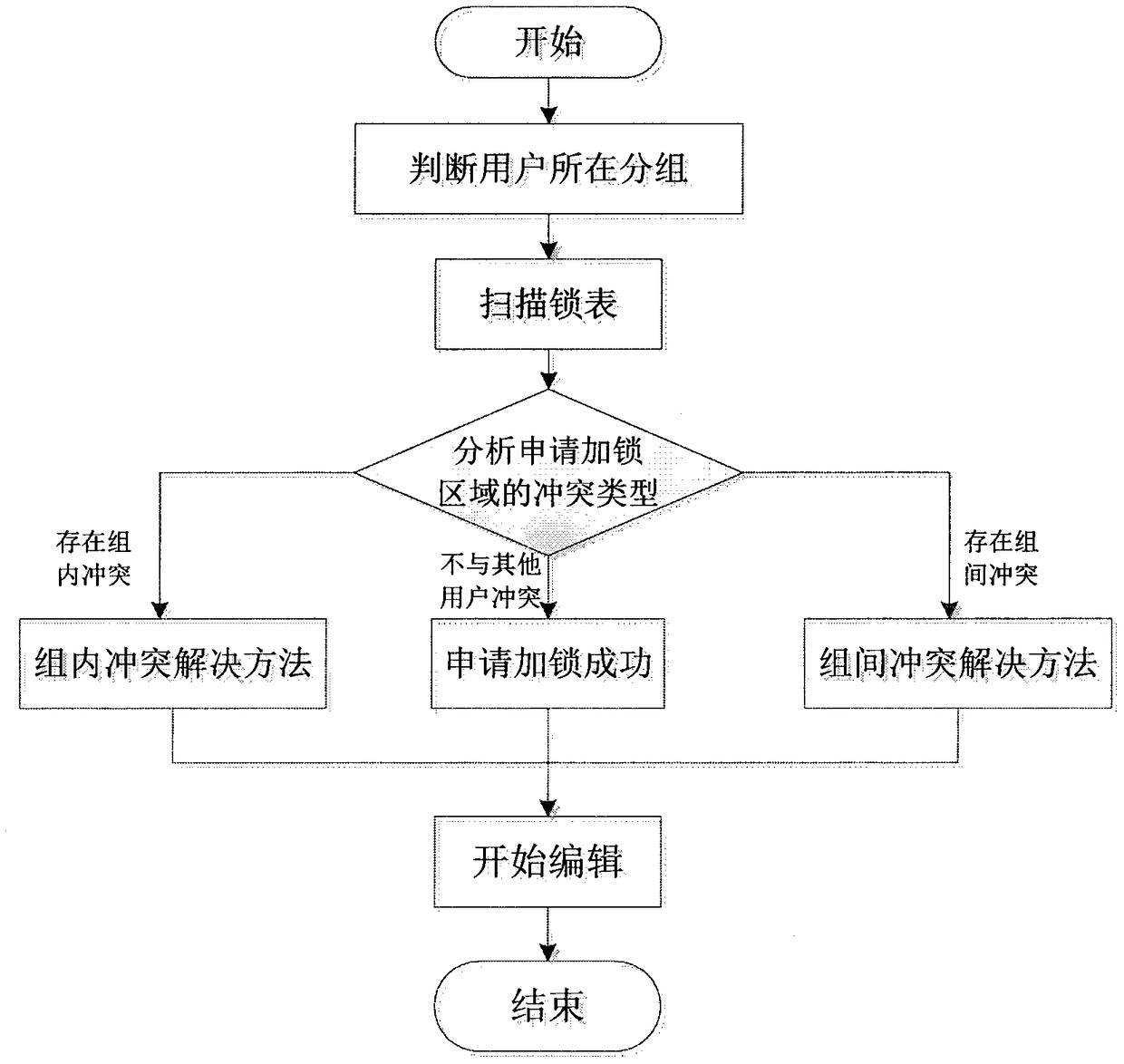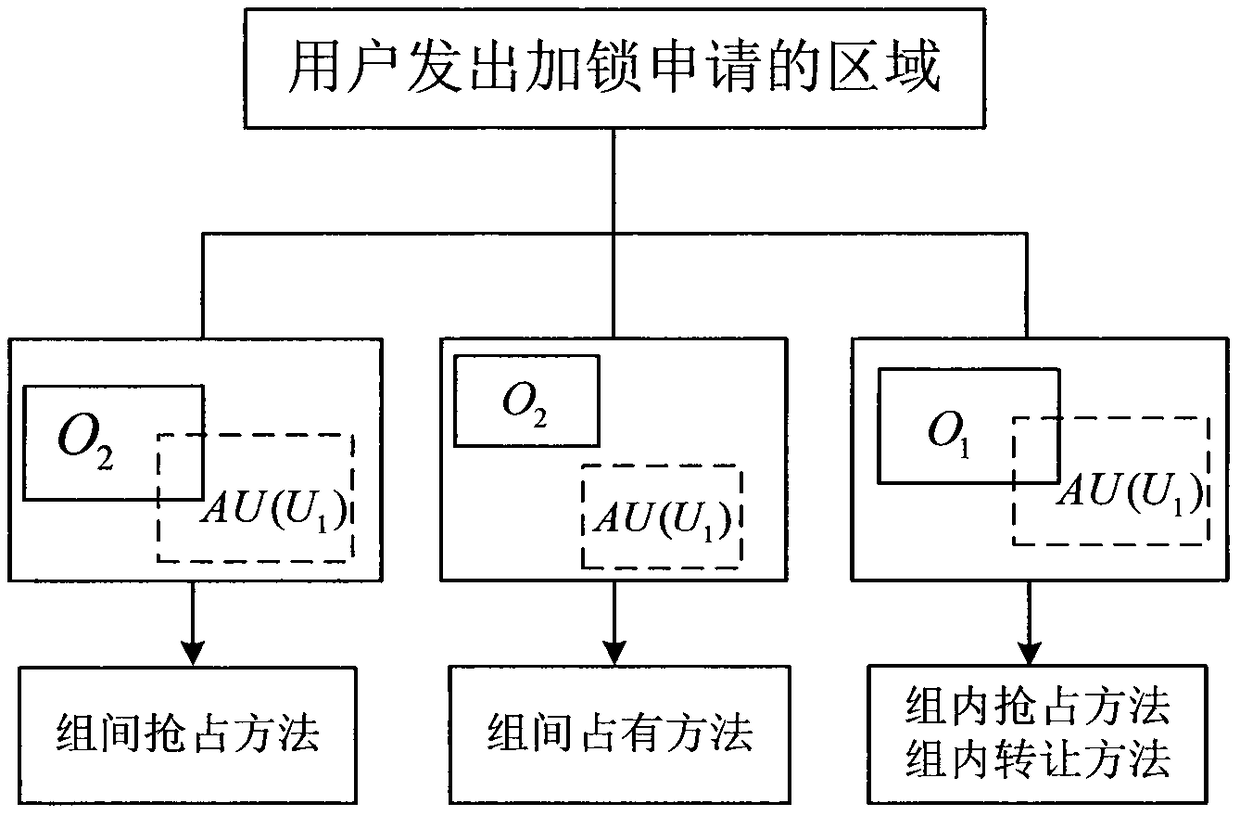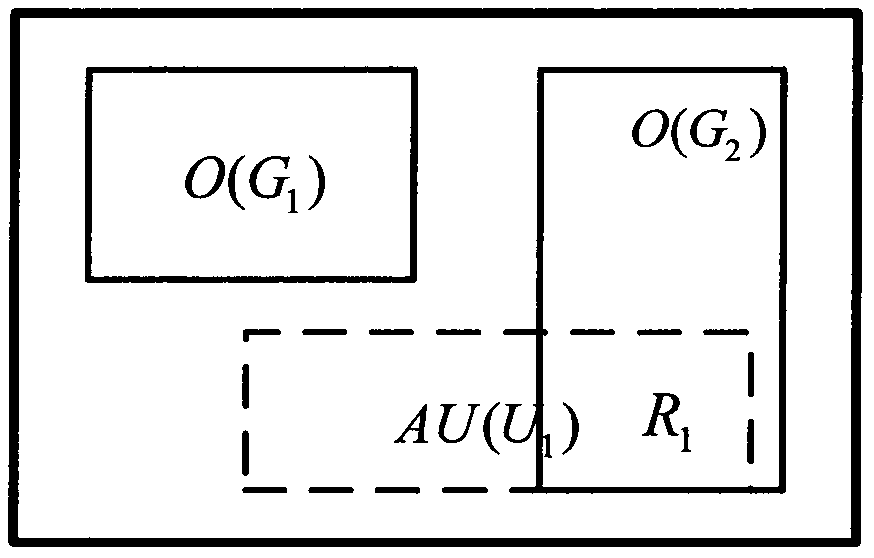A grouping-based concurrent locking method for collaborative editing
A technology of collaborative editing and collaborative operation, which is applied to concurrency control in multi-user N-group collaborative editing. The group-based collaborative editing concurrency locking field can solve the problems of multi-user N-group collaborative editing concurrency control, etc., to reduce waiting time, The effect of improving efficiency and improving concurrency
- Summary
- Abstract
- Description
- Claims
- Application Information
AI Technical Summary
Problems solved by technology
Method used
Image
Examples
Embodiment 2
[0049] Embodiment two of the present invention is as Figure 4 As shown in , it shows the scenario where there are both intra-group and inter-group concurrency conflicts. User U 1 and U 2 It's all G 1 group members, and U 1 Successfully obtained the locked area O(G 1 ), O(G 2 ) for G 2 Locked area for group members. The specific steps are as follows:
[0050] A.U 2 Submit a lock application and want to obtain AU(U 2 ) area editing rights. where R 1 is with user U 1 The part where the locked area overlaps, R 2 Yes with G 2 The part of the conflict caused by group locking;
[0051] B.AU(U 2 )-R 1 -R 2 If there is no member conflict in the area, the application for locking the area is successful and the lock table is updated. And U 2 belongs to G 1 group, incorporating the region into O(G 1 ), U 2 This area can be edited;
[0052] C. For R 2 area, if U 2 If you choose to cancel the lock application, then U 2 give up on R 2 Editing right of the area, oth...
PUM
 Login to View More
Login to View More Abstract
Description
Claims
Application Information
 Login to View More
Login to View More - R&D
- Intellectual Property
- Life Sciences
- Materials
- Tech Scout
- Unparalleled Data Quality
- Higher Quality Content
- 60% Fewer Hallucinations
Browse by: Latest US Patents, China's latest patents, Technical Efficacy Thesaurus, Application Domain, Technology Topic, Popular Technical Reports.
© 2025 PatSnap. All rights reserved.Legal|Privacy policy|Modern Slavery Act Transparency Statement|Sitemap|About US| Contact US: help@patsnap.com



